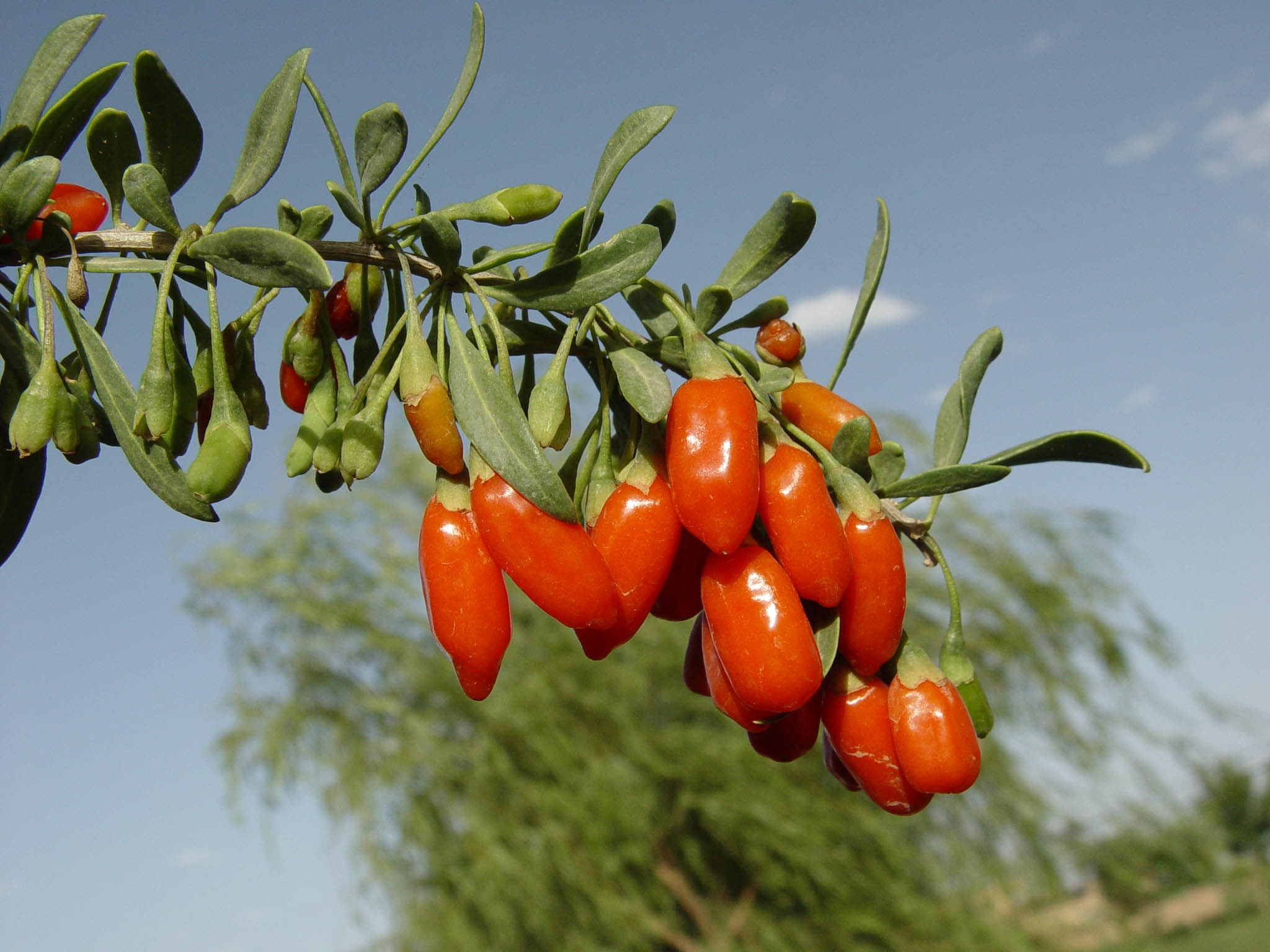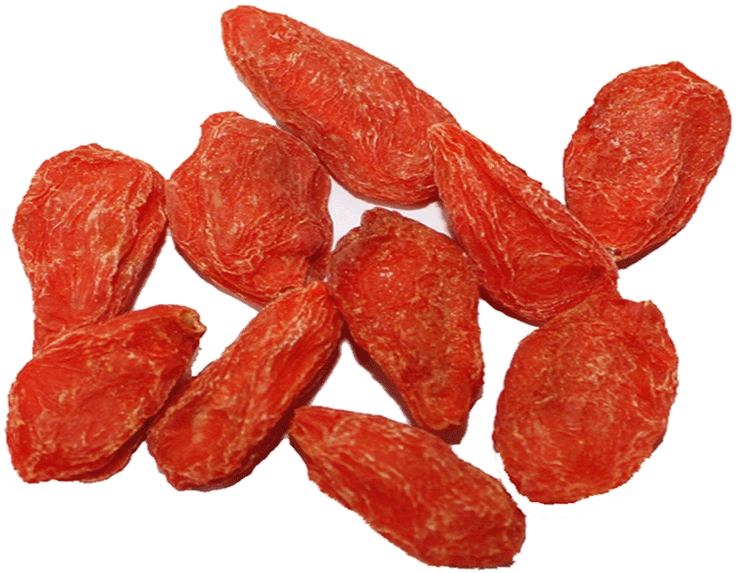Renowned in Asia as a highly nutritious food, goji berries have been used in Traditional Chinese Medicine for about 1,900years. Their undocumented legend, however, is considerably older, as goji berries are often linked in Chinese lore to ShenNung (Shennong).
Goji is a deciduous woody perennial plant, growing 1-3 m high, in the family Solanaceae. Its fruit,called the goji berry, which is known as the wolfberry, is a bright, red berry about the size of a cherry. It's very sweet and tastes like a cross between a cranberry and a cherry.
Goji leaves form onthe shoot either in an alternating arrangement or in bundles of up to three,each having a shape that is either lanceolate (shaped like a spearhead longerthan it is wide) or ovate (egg-like). Leaf dimensions are around 7 cm long by3.5 cm wide with blunted or round tips.

One to three flowers usually grow on stems 1-2 cm in length. The calyx (eventually ruptured by the growing berry) is comprised of bell-shaped or tubular sepals forming short, triangularlobes. The corolla are lavender or light purple, 9-14cm long with five or sixlobes shorter than the tube. The stamens are structured withanthers that open lengthwise, shorter in length than the filaments.
The majority of commercially produced goji come from the Ningxia, China, where they are grown onplantations. Cultivated along the fertile aggradational flood plains of theYellow River for more than 600 years, Ningxia goji have earned a reputation throughout Asia for premium quality. They are sometimes describedcommercially as "red diamonds". As the Yellow River passes through Gansu down stream toward Ningxia, loess is eroded by wind into the river water whereit is carried as silt in its downstream course. The Yellow River is renowned as the most silt-laden body of water in theworld, and this is where the river's name is derived.

Finer than sand,yellow Gansu loess was formed 2 million years ago after glaciation left behind dust rich in a host of minerals unlike anywhere else on Earth. Erosion into theYellow River is so dense that silt content in the Yellow River in Ningxia weighs37 kg for every cubic meter of water - the highest silt density measured.The Yellow River has flooded in Ningxia repeatedly over the millennia,depositing the mineral-rich silt over the river's flood plains where goji fieldsand other crops are renewed and fertilized by the deposited sediment. It's the origin of the enriched soil which nourishes Ningxia goji.


